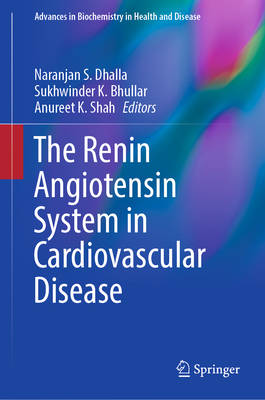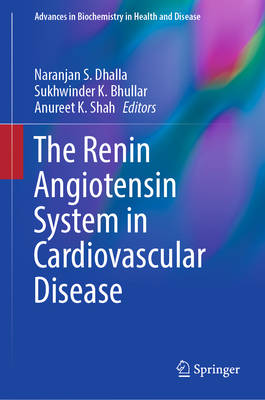
- Afhalen na 1 uur in een winkel met voorraad
- Gratis thuislevering in België vanaf € 30
- Ruim aanbod met 7 miljoen producten
- Afhalen na 1 uur in een winkel met voorraad
- Gratis thuislevering in België vanaf € 30
- Ruim aanbod met 7 miljoen producten
The Renin Angiotensin System in Cardiovascular Disease
€ 259,45
+ 518 punten
Omschrijving
This book on "Renin-Angiotensin System in Cardiovascular Disease" includes 25 chapters, which are organized in three sections, namely (i) modulatory aspects, (ii) pathophysiological aspects, and (iii) pharmacotherapeutic aspects. It includes an updated as well as comprehensive knowledge about molecular and cellular aspects for the role of the renin-angiotensin system (RAS) in the pathophysiology and therapy of cardiovascular diseases such as hypertension, atherosclerosis, ischemic heart disease, and heart failure. This book emphasizes the molecular and cellular mechanisms, signaling transduction pathways involved in the development of different cardiovascular diseases due to the prolonged activation of RAS. Furthermore, biochemical mechanisms are outlined for the inhibition of this system by the blockade of angiotensin converting enzyme as well as angiotensin II type 1 receptors in patients suffering from cardiovascular abnormalities. Since cardiovascular disease is the number onecause of death worldwide, leading to approximately 17.9 million deaths each year, there is a keen interest in understanding the pathogenesis and improving its therapy. In this regard, we can attest that this book provides ample information about essential components of RAS and their role in the development of cardiovascular disease.
From the selection of recognized global experts in their area of investigation, this book can be seen to cover diverse cardiovascular aspects and molecular and cellular mechanisms of angiotensin II action for the development of different cardiovascular abnormalities. It is our contention that this book will be most suitable for promoting knowledge in the field of RAS biology and will be of great interest to health professionals involved in both experimental and clinical cardiology as well as academic investigators and cardiovascular scientists, graduate students, and fellows worldwide.
From the selection of recognized global experts in their area of investigation, this book can be seen to cover diverse cardiovascular aspects and molecular and cellular mechanisms of angiotensin II action for the development of different cardiovascular abnormalities. It is our contention that this book will be most suitable for promoting knowledge in the field of RAS biology and will be of great interest to health professionals involved in both experimental and clinical cardiology as well as academic investigators and cardiovascular scientists, graduate students, and fellows worldwide.
Specificaties
Betrokkenen
- Uitgeverij:
Inhoud
- Aantal bladzijden:
- 452
- Taal:
- Engels
- Reeks:
- Reeksnummer:
- nr. 24
Eigenschappen
- Productcode (EAN):
- 9783031149511
- Verschijningsdatum:
- 3/01/2023
- Uitvoering:
- Hardcover
- Formaat:
- Genaaid
- Afmetingen:
- 150 mm x 230 mm
- Gewicht:
- 929 g

Alleen bij Standaard Boekhandel
+ 518 punten op je klantenkaart van Standaard Boekhandel
Beoordelingen
We publiceren alleen reviews die voldoen aan de voorwaarden voor reviews. Bekijk onze voorwaarden voor reviews.








